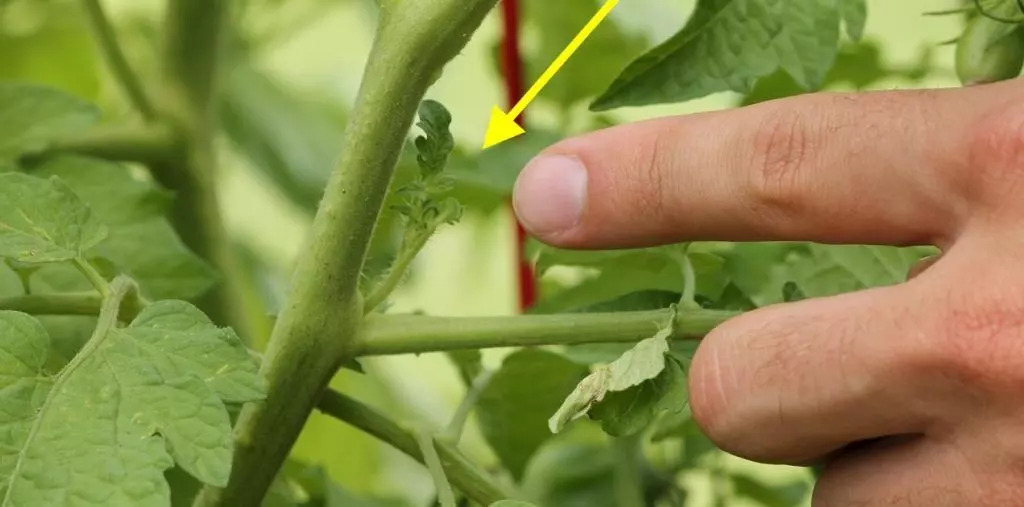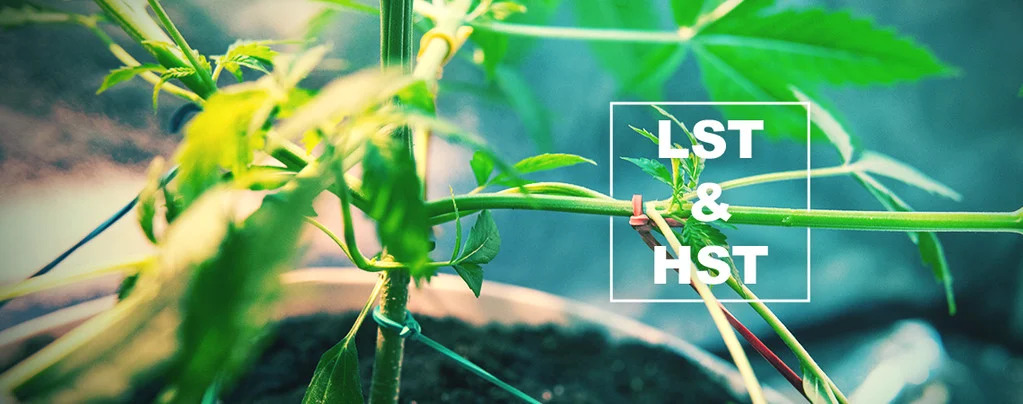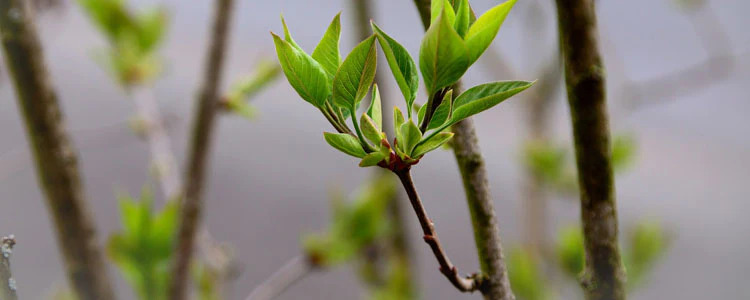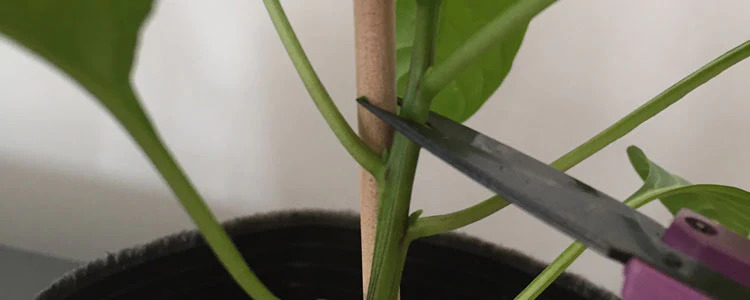The Complete High Stress Training Guide
High stress training (HST) is a form of plant training that causes higher levels of stress to the plant. This usually results in delayed recovery times and slower growth after the session, though it is followed by vigorous growth, increased terpene and flavonoid development.
HST is done by physically damaging or removing parts of the plant, such as leaves or branch tips. There are many different forms of this technique, depending on the needs and goals of the user, such as defoliation, super cropping, topping, fimming and much more.
The main goal behind using HST methods is to force plants into creating more side-shoots. This increases exposure to light, so each branch will grow wider and denser with larger buds.
What Are The Different Forms Of HST?
High-stress training (HST) is a method of manipulating the growth of outdoor plants in order to get larger yields and better-quality buds. HST involves damaging or removing parts of the plant, and there are five different techniques that can be employed to this end: topping, defoliating, FIMing, manifolding and super cropping.
Why Should You Try High Stress Training Plants?
High Stress Training (HST) is a great way to maximize the potential of your plants and optimize yields, especially when space is at a premium. It encourages fuller, bushier growth so that more colas can develop and receive their fair share of grow lights and nutrients.
HST also helps to reduce apical dominance since the plant is exposed to an increased number of stressors which redirect its energy away from certain branches. This in turn allows for better light penetration and larger flowering sites that promote denser buds with higher levels of flavonoids, and terpenes.
Check out this article: Are LED Grow Lights Bad For Your Eyes.
HST vs LST - Which Is Better For Your Grow?
Vegetable growing is a great hobby that many people enjoy, offering fresh produce and the satisfaction of seeing things grow and thrive. However, when it comes to training techniques for your plants, there are two main categories you can choose from: HST (High Stress Training) and LST (Low Stress Training). Both of these techniques have been gaining traction in recent years with growers of all levels.
The goal of HST is to manipulate and shape plants by pruning foliage and manipulating branches in order to promote healthy growth. This has a tendency to yield heavier yields while reducing time required for harvesting fruits or vegetables.
On the other hand, LST encourages the stems or roots of plants to use more energy by bending or flattening them rather than cutting them back. It generally requires less effort but may take longer before producing results when compared to HST.
To optimize your results, it’s recommended that you opt for both options as each one offers different benefits depending on what goals you have. Try both out over the course of your growing career and find out which one works best for you!
Can I LST AND HST My Plants?
When it comes to optimizing your grow, the process of combining low stress training (LST) and high stress training (HST) can lead to some really impressive results.
With LST, you can form an even canopy of leaves around each plant and keep them short and bushy, while HST techniques such as topping or supercropping can create more buds and promote greater growth.
If you want to take your cultivation game up a notch, consider experimenting with different methods until you find what works best for you.
At the same time, there is no need to feel overwhelmed by the prospect of incorporating both LST and HST into your growing regimen.
Different Techniques For High Stress Training Plants
Now, we will guide you through the process of High Stress Training (HST) for your plants. The first step is understanding the appropriate timeline to begin HST.
Once we've discussed the ideal timing, we will provide detailed instructions on the four primary HST techniques used by outdoor and indoor growers: topping, FIMing, manifolding, and supercropping.
When Should You Start High Stress Training?
It is important to determine, before beginning high stress training techniques, when the optimal time to begin is. The best time in general for any type of plant training is during the vegetative phase when plants are young and strong, but that does not necessarily mean you should begin from day one.
While it is helpful to start as early as possible, the plants must be allowed to harden off before too much strain can be placed on them, or the stress may result in failure.
Topping
Topping is an incredibly simple yet effective form of high stress training technique, and is one of the best methods we recommend to beginners as a starting point. The process involves snipping the dominant stem off at a node, where two subsequent shoots will start to grow in its place calling for new light and being saturated with resources previously allocated to that dominant shoot.
Over time, those two new shoots can then be topped as well, reducing apical dominance and increasing overall growth further down the plant. This particular HST technique produces multiple colas along the entire plant’s growth structure lessening risk of harvest failure due to mold or pest attack concentrated in one single area from over-stressing it.
It also promotes more even lighting distribution because of laterally spread out colas allowing plants to use far more energy than before rather than investing only in growing taller since they have already maximized their exposure.
In addition, topping helps reduce excessive growth and ultimately eliminate problems connected with apical dominance caused by previously unfettered growth of individual stems that became too tall and unwieldy.
Defoliation
Defoliation is the process of strategically removing fan leaves from your plant. By removing some fan leaves, it allows light to penetrate deeper into your plant, reaching all those small flower sites that were regularly blocked by the large leaves.
The large amount of sunlight will ensure proper nutrient uptake and photosynthesis for the smaller branches, which are more susceptible to damage due to their lack of foliage.
Defoliation isn't a process you want to perform too often or drastically though; remember that foliage is still incredibly important for photosynthesis and overall growth! If done improperly, defoliation will weaken or stress out plants greatly as it deprives them of crucial nutrients found in the fan leaves.
Carefully weigh out if it's best to remove any fan leaves at all - even improvement in light can't compare to the loss of vital nutrition the plant would suffer without its natural foliage intact.
FIMing - Topping With A Twist
FIMing is a novel technique in plant trimming that has the potential to revolutionize how gardeners approach topping and pruning. Unlike regular topping, FIMing involves 'missing' the node of growth by only snipping off half to three-quarters of it.
This is done as a way to reduce the stress stimulus on the plant, while also strengthening other colas throughout. The end result is often four new colas per snip, compared to two with traditional topping methods.
This method can be especially beneficial for those who grow outdoors in hot climates. The reduced plant damage caused by FIMing allows plants to recover faster during periods of extreme heat or drought and can prevent slowed growth or even death due to environmental conditions.
Furthermore, since FIMing encourages lateral growth and more branching, folks looking for higher yields without having to invest in additional plants may find this approach particularly valuable.
Super Cropping - Bending Branches So They Grow Horizontally
Super cropping is a high stress training technique for bending branches to grow horizontally. Instead of cutting off growth, you bend the branches down at a horizontal angle.
The process works by damaging the tissue between your fingers when the branches are more hardened off. It may sound counterintuitive, but super cropping actually causes more light and air circulation to contact the leaves better which helps plants reach their maximum potential.
This technique requires meticulous attention as it can be harsh on the healthy plant if done incorrectly. Overdoing super cropping or using it too early can damage its internal structure and reduce yield in your plants.
In order to succeed with this method, carefully select strong branches that have reached maturity before gently contorting them between your fingers while rolling them back and forth slowly until they have been bent into position.
Once you have achieved success with super cropping, give your plant stem plenty of time to recover and enjoy reaping its rewards once harvest comes around.
Manifolding or Mainlining - Creating A Bush From The Start
Manifolding or mainlining is an effective technique for creating robust and productive plants from the start. It combines a few different methods such as low-stress training (LST) and defoliation to create a flat canopy of large colas.
This can be done two to four weeks into the vegetative phase, by topping off lower growth that does not receive enough light energy. By reducing the number of generic branches, it improves light penetration up top where the most buds will form.
Additionally, mainlining also helps with even bud production, as all colas are of similar height. After topping and pruning—cutting off excess foliage—it’s important to continue managing your plants’ height in this manner but you can still perform some additional care tasks such as trimming weak side shoots or removing fan leaves that have grown too large.
To ensure optimal bud production, adjust these activities according to each individual strain’s size and yield potential while understanding its capacity for growth management techniques like mainlining.
Integrating High Stress Training Techniques For A Heavy Harvest
Integrating high stress training techniques into a grow can be challenging and intimidating, but when done correctly, it can provide immensely rewarding results. To ensure success with training, you should begin by assessing the strain being used, some strains are more susceptible to stress than others, so tailor your HST strategy appropriately.
Once you have an understanding of the strain and its ability to handle stress, it’s time to implement a plan for your HST program.
A sample HST program could involve topping or FIMing plants at the fourth or fifth node, followed by a few weeks of untrained growth prior to switching to 18-6 lighting throughout the remainder of vegetative growth and flowering stages.
During this period of early training and vegetation cycle, careful monitoring is essential in order to identify any signs of stress (such as discoloration or spots on fan leaves) and take measures to reduce its effects. Nipping off any lower branches and introducing additional airflow should help in keeping plants healthy while they develop.
Allow Your Plants To Rebound From Stress After HST
High Stress Training (HST) can be an effective way to boost your plant's production, but it isn't without risks. Your plants are under a great deal of pressure when exposed to the drastic pruning and bending that HST involves, so allowing your plants the time they need to bounce back is essential.
Good watering and feeding after a training session will help preserve the health of stressed plants, as well as providing energy for growth and recovery. Doing this also makes sure your plant has all the nutrients it needs to recover from periods of intense stress - one such nutrient being silica or calcium magnesium which helps strengthen membranes in newly-formed leaves and branches.
Final Thoughts On High Stress Training Your Plants
High stress training is a great way to optimize your garden, but it is important to keep in mind that the process can be harsh on your plants and will require extra care and attention. When high stressing your plants, be sure that you are using clean, sterile tools and are proceeding with patience through the entire process.
Your plants will need a longer vegetative period following high stress training due to the fact that they will have to take some time afterwards to recover from the intense manipulation they just endured. This extended vegetative period may translate into surprisingly little growth happening during the recovery time, but this should not worry you in the least.
As long as you complete the recovery period properly, you can rest assured that it will pay off come harvest day when your garden heavy yields an abundance of delicious fruits or vegetables!











